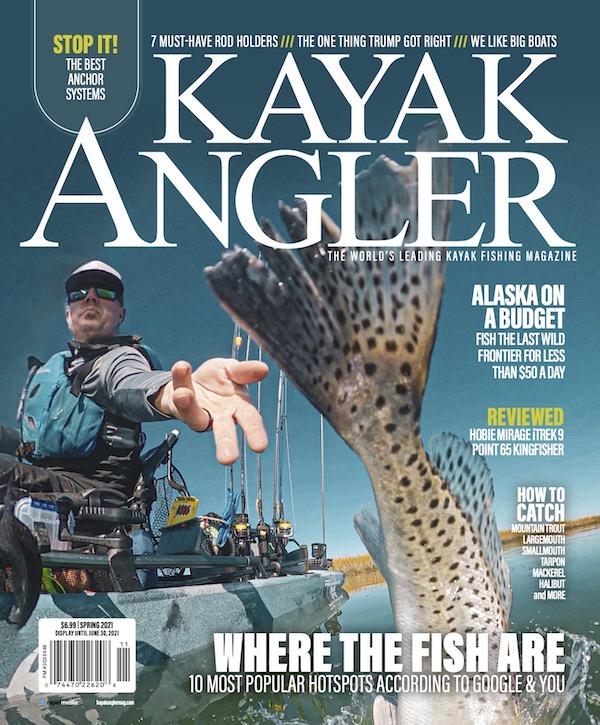When I’m fishing for trout in a mountain creek or river, I mainly focus on the outside edge of a bend. As I cast to pools, channels and undercut banks, my boat floats overtop the shallow inside bend.
The inside might appear a vacant and unrewarding place to drift a fly. There are plenty of reasons to fish the trusted outside bank. But, overlooking the river’s other side means missed opportunities.
The Inside Track on River Trout Fishing
Typically, I fish the inside of a river bend using a single dry fly, a dry-dropper rig or a streamer. For dries and dry-droppers, I use a nine-foot, 5-weight fly rod with floating line.
Leaders range from nine-foot, tapered 2x to 5x and up to 12- to 14-foot leaders tapered to 5x to 7x.
An inexpensive reel is all I need to hold the fly line. A smooth drag will pay dividends in case a 20-inch trout takes my streamer.
Fly selection can vary. It pays to know the active insects. I use similar patterns at the start of my fly rotation.
For dry-dropper rigs, I use large dries, like a foam beetle or a size 10 to 12 elk hair caddis. The large fly allows me to float a weighted nymph underneath. Attach the nymph to the dry fly with 16 inches of 7x tippet tied to the bend of the dry fly hook.
It pays to know the active insects.
f15-pouI use similar patterns at the start of my fly rotation.
Another way to tempt trout is streamer fishing the inside river bend with a 7-weight rod and either floating line or sink-tip line. Leaders for floating lines range from tapered to 0-2x tippet and sink tip leaders are two to three feet of 20-pound mono tapered to one to three feet of 15‑pound.
My favorite streamers are a Sparkle Minnow, Brahma Bugger and mini Bangtail.

Whether I am employing a single dry fly, dry-droppers or streamers, the best tactic is to predict where trout might hold on the inside bend and target casts instead of firing blind.
A Keen Eye Can Help You
Clues to where trout might hold and feed can be subtle. Besides obvious boulders or logs, the bend may seem featureless and devoid of any useful structure, but the fish will find the most indistinct places to station themselves.
When the sun is low, I often find more fish on the inside.
Small depressions provide just enough depth for the fish to hover near the bottom remaining out of reach of feathered predators soaring above. Dips in the river bottom also offer a slight back current for the trout to hold with minimal energy.
Changes in substrate color are another hiding spot. A uniform sandy riverbed provides little camouflage for trout, but a good mix of light to dark color can be enough for them to dart into and disappear from sight. Shadows cast over the water produce a color change. When the sun is low, I often find more fish on the inside.
Last, but not least, I scan for constricted water or riffles. The current line may only appear as a bubble line or seam where riffles meet softer water. Trout will gravitate towards these areas as a food funnel. If there is a significant depth and color change, then the spot is worth a cast.
Fish the Inside Bend for Surprise Trout
Often overlooked, the inside river bend can be a cheat code on a slow day of trout fishing. With a bit of observation, casting on the inside will get me out of a slump.

Look for trout where they aren’t usually seen. | Feature photo: John Zordell






